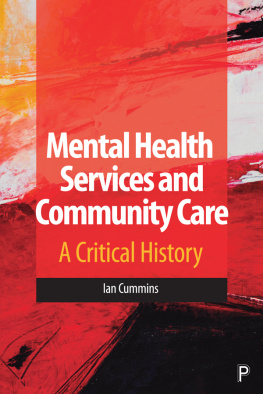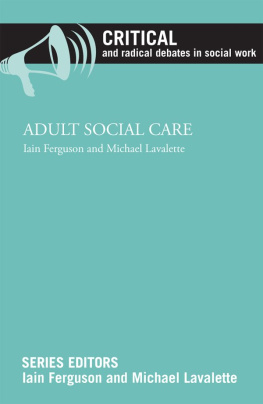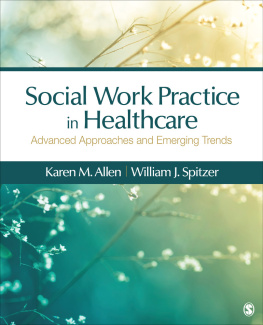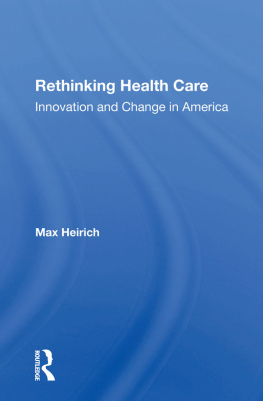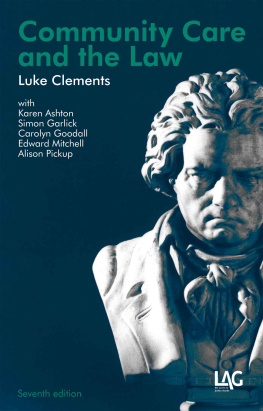Introduction
Primarily, this book explains and analyses concisely how the Care Act 2014 underpins the provision of adult social care in England. Adult social care is, in law, distinct from health care, which comes under the National Health Service Act 2006. However, social care and health care are intertwined in real life. People need both. Secondarily, therefore, the book considers selected aspects of health care, underpinned by the NHS Act 2006.
Scope of the book
The Care Act 2014 applies to social care in England. And to adults only, except when a child, or a young carer, is approaching the age of 18. Likewise, the NHS Act 2006 applies to England only. The book notes, in passing, comparable legal provisions for social care and health care in Wales, Scotland and Northern Ireland.
Approach of the book
They say the best is sometimes the enemy of the good. With this in mind, the book is selective, striking a balance between brevity and length. The many references point the reader to more detail.
Complexity of the Care Act 2014
The Care Act simplifies adult social care law but is not straightforward. The Act itself runs to 167 pages, the regulations to over 100 pages and the statutory guidance exceeds 500 pages. The rules are by no means intuitively easy to understand either on their legal face, or in their practical application.
Complexity of NHS legislation
The NHS Act 2006 comes in, currently, at 711 pages. The Health and Social Care Act 2012, which amended the 2006 Act, is 728 pages in length, not to mention all the subsidiary regulations and extensive guidance applying to the NHS.
Balancing accessibility, length and detail
Such volume and complexity of legislation are arguably not healthy. The original NHS Act 1946, one of the great pillars of the welfare state, required a mere 93 pages. Hence this books attempt to make this legislation accessible, whilst providing sufficient substance.
Legal cases and ombudsman investigations
Reference is made to recent case law but also to older case law, where this is, or is likely to be, relevant to an understanding of the Care Act. The relevance of previous case law is at least twofold. First, some of the Care Act wording is very similar, or identical, to that of previous legislation. Second, some of the case law is essentially decided on common law principles of fair and lawful decision-making (the courts) or of good administration (the local ombudsman and health service ombudsman). These principles remain constant, whatever the legislation.
Third, a significant number of local government ombudsman cases has been included since (a) these are a useful litmus test of what is going on under the Care Act, and (b) to date, legal cases heard under the Care Act have been few. Recommendations by the ombudsman, in relation to maladministration causing injustice (or failure in service), are not legal judgements and do not establish legal precedent. Nonetheless, a complaint to the ombudsman can be an effective route for remedying faulty decision-making under the Care Act.
Care Act: positives and pitfalls
In April 2015, the Care Act replaced a large amount of piecemeal adult social care legislation. The earliest Act dated back to 1948. Few knew what all this legislation was, fewer still all its content and perhaps none how it all fitted together.
Positive notes
The Care Act has unified adult social care legislation. It contains what many would regard as principles and rules relating to good practice such as peoples well-being, outcomes people want to achieve, prevention, integration of services, etc.
Cautionary notes
There are, however, cautionary notes to be sounded:
Increasing demand but limited resources . The Care Act boasts various ambitious and aspirational duties, both general and specific. Yet local authorities are short of resources at a time of growing social care need.
Bricks from straw . The mismatch between ambitious legislation and resources is nothing new. In 1988, the Griffiths report laid the foundation for law reform and the NHS and Community Care Act 1990, predecessor to the Care Act. It noted that many local authorities felt that the Israelites faced with the requirement to make bricks without straw had a comparatively routine and possible task compared to delivering adult social care. It warned that it would not be acceptableto allow ambitious policies to be embarked upon without the appropriate funds.
Noble aspiration and fine words . The Griffiths reports warning was prescient. Nearly ten years later, in 1997, the House of Lords heard a major legal case in which battle lines were drawn between peoples needs and the resources available to meet them. Lord Lloyd noted that the local authority Gloucestershire County Council was in an impossible position; truly impossible, because even if the Council wished to raise the money themselves to meet the need by increasing council tax, they would be unable to do so by reason of the government-imposed rate capping. It was the governments departure from its fine words in the community care White Paper that had brought about the situation. The passing of the Chronically Sick and Disabled Persons 1970 Act was a noble aspiration. Having willed the end, Parliament must be asked to provide the means.
All about money . As a judge put it, much more recently, in a childrens case, it is, inevitably, money. Making financial provision for children being looked after by local authorities under the Children Act 1989 (the Act) is expensive. Not surprisingly, local authorities are keen to trim their obligations to the minimum possible. As for children, so for adults.
Two main planks of the Care Act
Given the mismatch between the Care Acts apparent aspirations, the resources available and the degree of need, two things remain prominent when one steps back far enough from the legislation. First is the emphasis on prevention. Second is the focus on, and entitlement of, informal carers. These two planks represent, for both central and local government, a way of making limited resources go further.
It is no accident that the Health Secretary has stated that families need to care for each other more, and lamented the fact that we live in England (with merely 16% of inter-generational households), compared to Italy (with 39%). However, under the Care Act, a carer must be able and willing to provide the care, before that care can legally be relied upon. There is not, currently in English law, the equivalent of the old liable relatives rule under section 42 of the original National Assistance Act 1948 and, before that, in section 14 of the Poor Law Act 1930.
Shortcuts and escape routes
Place enough pressure on local authorities (or the NHS), with too few resources to cope, and exploration of shortcuts and escape routes is inevitable. Something akin to a law of physics, so to speak. Under the Care Act these attempted escape routes or shortcuts will be many and various. Some will be clearly lawful, others equally clearly not. Others still will sail so close to the wind that, until or unless examined by a court, their lawfulness or otherwise will be unknown: they will occupy a legal no-mans land.
The following are some of the obvious escape routes to saving expenditure envisaged by the Care Act and the guidance, and thus, in principle at least, likely to be lawful if applied carefully:



